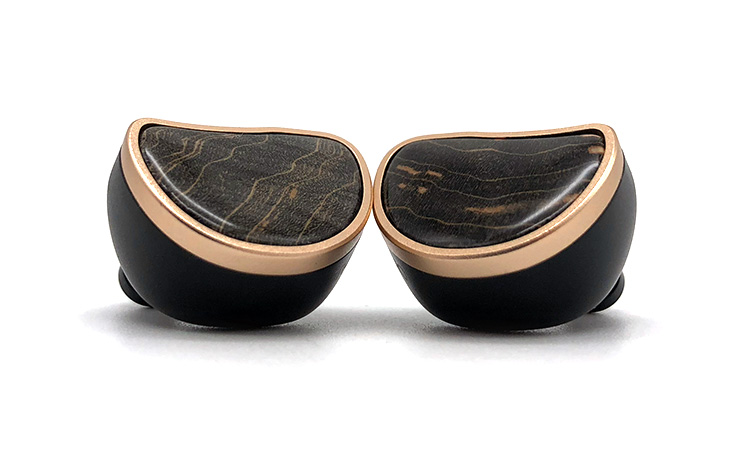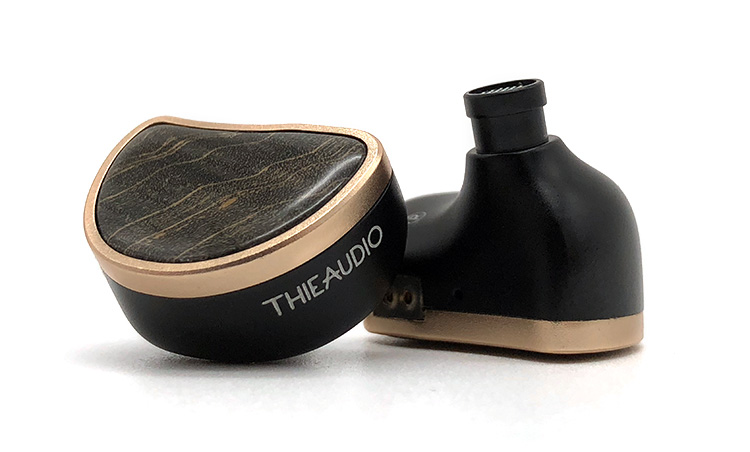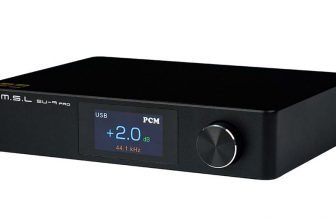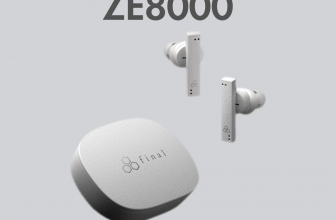
In this feature, we review the Thieaudio Elixir which is a new single ‘3-Dimensional Velocity Transducer’ or dynamic driver universal in-ear monitor. It is priced at $209.
Disclaimer: This is a sample in exchange for our honest opinion. Headfonics is an independent website that does not have any affiliate links or status. We thank Linsoul for this opportunity.
To read more about Thieaudio products we have previously covered on Headfonics please click here.
Note, that this article follows our latest scoring guidelines which you can read up on here.
Those keeping an eye on Thieaudio will remember the Wraith we just reviewed just a few months back which is the company’s way of reviving its headphone lineup. It is one of those well-reasoned moves that stir up the market and its corporate image.
Most of us however probably became acquainted with the brand thanks to its strong offerings of IEMs like the Legacy 2 and Legacy 5 IEMs. And so, since building portable monitors is more of Thieaudio’s home ground territory, expectations for the Elixir are elevated.
Still, I don’t imagine the Elixir to miraculously extend a person’s lifespan or take away ailments as I associate it with its name. But this gets me excited to find out if the ‘elixir’ coming from Thieaudio has the potency to live up to its promise of keeping a pleasing tonality while encapsulating an analog vintage sound.
Tech Highlights
Rediscovering the strengths of a dynamic driver, Thieaudio went into creating their 3D Velocity Transducer which has a claim of being set apart from conventional designs. The gist of it is the layers of multi-walled carbon nanotube sheets coated in beryllium granting greater tension in the membrane for better responsiveness.
The internal structure is also assembled with strong magnets and a completely copper voice coil actuator. Still helping with the purpose of the transducer is the carefully engineered acoustic chamber to match what the Elixir is aimed to sound like.
By having this 3D Velocity Transducer, the Elixir is supposedly able to weave better the definition of audio into every part of its 20Hz to 40kHz frequency range instead of singling out the treble region to handle detail like what other IEMs do.

Design
Upon learning about the vintage and analog inspiration Thieaudio had for the Elixir in terms of sound, the aesthetically aged and mature air given by the in-ear monitors began to make sense. I like how everything is tied together forming a singular and cohesive character that boldly shows off what makes the Elixir special.
What makes the Elixir so is the burl wood block used as the face plate finished off in a clear coating for a touch of glimmer. And since it is using genuine wood, even for a matched pair of IEMs the face plate won’t be the same making a good reason for those who want a unique set.
The burl wood is flat but joins the rest of the IEM with a soft downward slope on its edges. It is also slightly proud of the anodized aluminum bezel bordering it.
For compatibility with aftermarket cables, there is a removable 2-pin 0.78mm sockets at the top. The ones Thieaudio used feel high quality since they accept the default cable with finesse, not requiring too much or too little force.

Comfort & Isolation
As I was doing the review of the Elixir during the Christmas holidays, I thought the best way to test its comfort and isolation is in a nearby mall packed full of excited families. I couldn’t begin to describe the noise and foot traffic happening but thanks to the sufficient amount of passive isolation given by the Elixir, the audible bustle was reduced to half.
The longest I’ve worn the Elixir is around three to four hours at a time. And never did I think it was uncomfortable or seated weirdly. I believe the lightness and shape of the chassis match well with my average-sized ear as it is also sealing well as already mentioned.
What’s more, the ear guide deserves some points as well since Thieaudio managed to design a profile that addresses my usual complaint with removable systems like this one. The curvature aggressively leans back early to hug the contours of the backside of the ear so the Elixir hangs securely from the top.
Tips
Without making it more complicated than it should be, users will only have to decide whether they want to use silicone or memory foam since there is only one set of each in three different sizes.
First, the white silicone tips have a solid-colored stem that changes to translucence as it gets to the flaps. The stem is also noticeably firm and has a wide bore making it easy to put on the nozzle since it doesn’t deform mid-assembly.
Slightly taller than the silicone ones, the memory foam tips have a similar bore diameter but a more elastic stem. I’m not too sure if the different colored stem for each of the three sizes matters but what brings them together is they are all made of the same black outer tip.

Stock Cable
Calling attention to itself, the single-ended 3.5mm 2-core braided cable of the Elixir is as announced, a nice pairing to the IEM’s appearance. I also find it generally soft and easy to use even though on occasions the sheathing used returns a plasticky feel reducing its refinement.
According to their website, the cable for the Elixir is made through a mix of single-crystal copper and silver-plated OCC copper. It has a length of 1.2m which follows the common dimension of cables for IEMs.
Attaching the left and right sides to the IEMs, there is an easily missed blue and red dot marking at the very end of the 2-pin connectors.
What I like about the cable for day-to-day use is its good resistance to microphonics allowing the cable to stay out of the way. And for those thinking of using the chin slider, I also got proper results as it frictionally stops precisely where it was left.

Packaging & Accessories
Unlike in movies or RPGs where you can get a brightly colored elixir encased in a thick see-through glass bottle held shut by a cork, Thieaudio is sticking to a more shadowy all-black box. The packaging is on the taller side and the only main trace of design is the softly shimmering company logo located in the center.
Removing the outer sleeve, the rest of the unboxing will ask to pull the top lid upwards away from the bottom cradle holding the contents.
Eyes will be drawn immediately to the upper half where the Elixir is lying already connected to the 3.5mm default cable. Don’t worry, the cable isn’t haphazardly presented thanks to the circular cavity hidden beneath the thick foam where the rest of the cable is neatly wound.
The bottom section is saved for the thin box holding a booklet-style use manual then further below is a hard case in a deep purple shade. There’s no special presentation for the tips and filters as they’re packed in thin plastic and tucked inside the case.
Held secure by strong magnets, the case Thieaudio includes is calculated exactly to fit the Elixir. Once the tips are added, I find that I needed to precisely line up the face flush against one side of the case to avoid unnecessary pressure in the IEM.

Sound Impressions
The white silicone ear tips were used in the formulation of the sound impressions.
Summary
It may not be immediately obvious as it may put your attention elsewhere but once you get to the whispery parts the Elixir will show a delicacy and effectiveness where the etched quality will peak through. This is because of the timbre that sets itself apart from other IEMs that value clarity at the cost of tonal balance.
Here, the Elixir will be enjoyed by individuals looking for a kinder signature infused with a well-rounded image of what is happening. It acquires its unique personality formulating it to not need to be the widest, warmest, or whatever sounding IEM out there.
The lower end of the spectrum tends to get slightly excited and filled with muscular rumble with heavy beats. It is still not boosted enough to be an easy recommendation for bass heads but it does have the grunt when needed.
Thieaudio isn’t teasing when they said that resolution won’t be resting solely in the hands of the upper frequencies. Having a welcoming timbre without the sterileness of a peaky monitor, the subtleties and clarity of an image is permeating throughout.
Timbre
Having a classy exterior to match, the Elixir didn’t disappoint when I first heard it performing a jazz album with an engaging yet romantic quality. It certainly didn’t take too long before the claimed signature of Thieaudio naturally came to me.
One of the immediate traits that I find the Elixir does well is the warmth and substance it gives the vocals. The Elixir manages to isolate quite easily between each object thanks to the silky flow and nice balance with the soft and deep reverb of the low-end which was especially shown with blues and acoustic music.
The Elixir also shows talent in shaving off the shout usually developed in the upper midrange. It is noticeable that while all the information is there, this region transforms the energy of a pitchy singer into a smoother serenade.
Echoed in the rest of the treble region to not break what the Elixir has going on, expect that the attack is there but the presence won’t be too forward. The depth of a cymbal crash is heard without sounding harsh and tinny.
Similarly, the dynamic playing of a saxophone sounds big and stimulating which is continued by the cello which also shows richness. Strings, in general, are not that thin and yet the violin on certain occasions plays further away than expected due to it being lighter than the likes of a guitar.
Staging
In an intimate song, the Elixir showed its capacity to layer as it handled a scene filled with multiple instruments without getting too busy or blurred. If there are a lot of bass notes though, expect to hear them become bigger than the rest of the song.
Cymbals set in a farther space gave a sense that the instrument is set a good spread outside of the driver. So, the Elixir won’t be claustrophobic by any means as it can recreate a live recorded room filled with a noisy audience in a way that is believable.
Where the Elixir struggle is the forward depth in staging. I find that it has an easier time doing lateral imaging and staging than it does center-placed objects.
Click on page 2 below for pairings and our select comparisons
creditSource link






